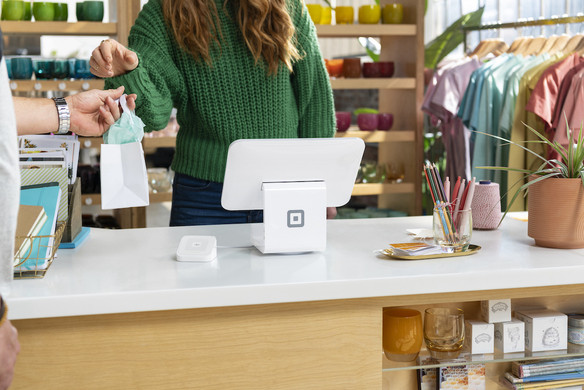Table of contents
One sales channel isn’t enough any more. To compete in today’s uber-competitive retail landscape, you need to go omnichannel — that is, offer a seamless way for customers to purchase items and connect with your brand both digitally and in your brick-and-mortar store.
A recent study by Harvard Business Review (which surveyed more than 46,000 customers who shop at a “major U.S. retail company”) underscores why omnichannel is so important now. Here are the key takeaways from the survey for small businesses:
Online retail is booming
You probably already knew this, but people are shopping online more and more and visiting retail stores less and less. Retail through digital sales channels, which includes mobile channels, increased by a whopping 23 percent in 2015.
So if you’ve been dragging your feet on setting up a robust online store, it’s time to get a high-caliber one up and running stat. (There are a variety of online store software options in Square App Marketplace that can get you off to the races in no time).
Amazon reigns supreme
With the ability to get almost any item on the planet shipped to you immediately, Amazon has completely changed the shopping game. The giant now accounts for 26 percent of all online retail sales. And as it expands aggressively into new markets like grocery shopping (with Amazon Fresh) and fashion (it owns ShopBop), Amazon is poised for even further domination.
We’re not going to lie, competing with Amazon is tough. To do so, you have to find ways to differentiate your brand. Doubling-down on — and then marketing — a niche area of expertise is one way to do this, as is offering unique in-store experiences. And if you can manage it, ship purchases to your customers as soon as possible.
But omnichannel customers are more valuable
Some good news for brick-and-mortar shops: Omnichannel customers are actually more valuable than those who shop only online. They spend an average of 4 percent more every time they shop in the store and 10 percent more online than single-channel customers do.
What’s more, with each additional sales channel they used (mobile, apps, desktop browsing), they spent more money when they came into the retailer’s brick-and-mortar store. Customers who used more than four sales channels spent 9 percent more in the store than customers who just used one sales channel.
Customers research online and buy in stores
Given impulse buying tendencies, you would think that people spend more when they shop online. However, this survey found the contrary. It seems that consumers are now doing research online — something the industry is coining “webrooming” (as opposed to “showrooming” in a brick-and-mortar shop) — before they head into the retailer’s store.
And once they get into the storefront, they spend more. When customers did some clicking around on the retailer’s site (or on sites of similar retailers) and shopped in the store, they ended up spending 13 percent more than online-only shoppers.
These findings are in line with similar research from BigCommerce (part of Square’s App Marketplace), which reported that although most consumers shopped online, they spent the majority of their shopping budget (65 percent) in brick-and-mortar stores.
Customers love ecosystems of omnichannel touchpoints
The survey found that omnichannel customers were huge fans of retailers’ omnichannel touchpoints — things like smartphone apps to compare prices or download coupons, interactive in-store digital lookbooks, or price checkers on tablets throughout the store.
Omnichannel customers love buying online and picking up in the store, or buying in the store and getting their items shipped. In short, they’re looking for a 360-degree shopping experience across both digital and in-store channels.
It’s clear that a robust omnichannel strategy is no longer just the future of retail — it’s arrived in force. To compete, take steps to integrate as many in-store and digital touchpoints as possible with your brand.
![]()











